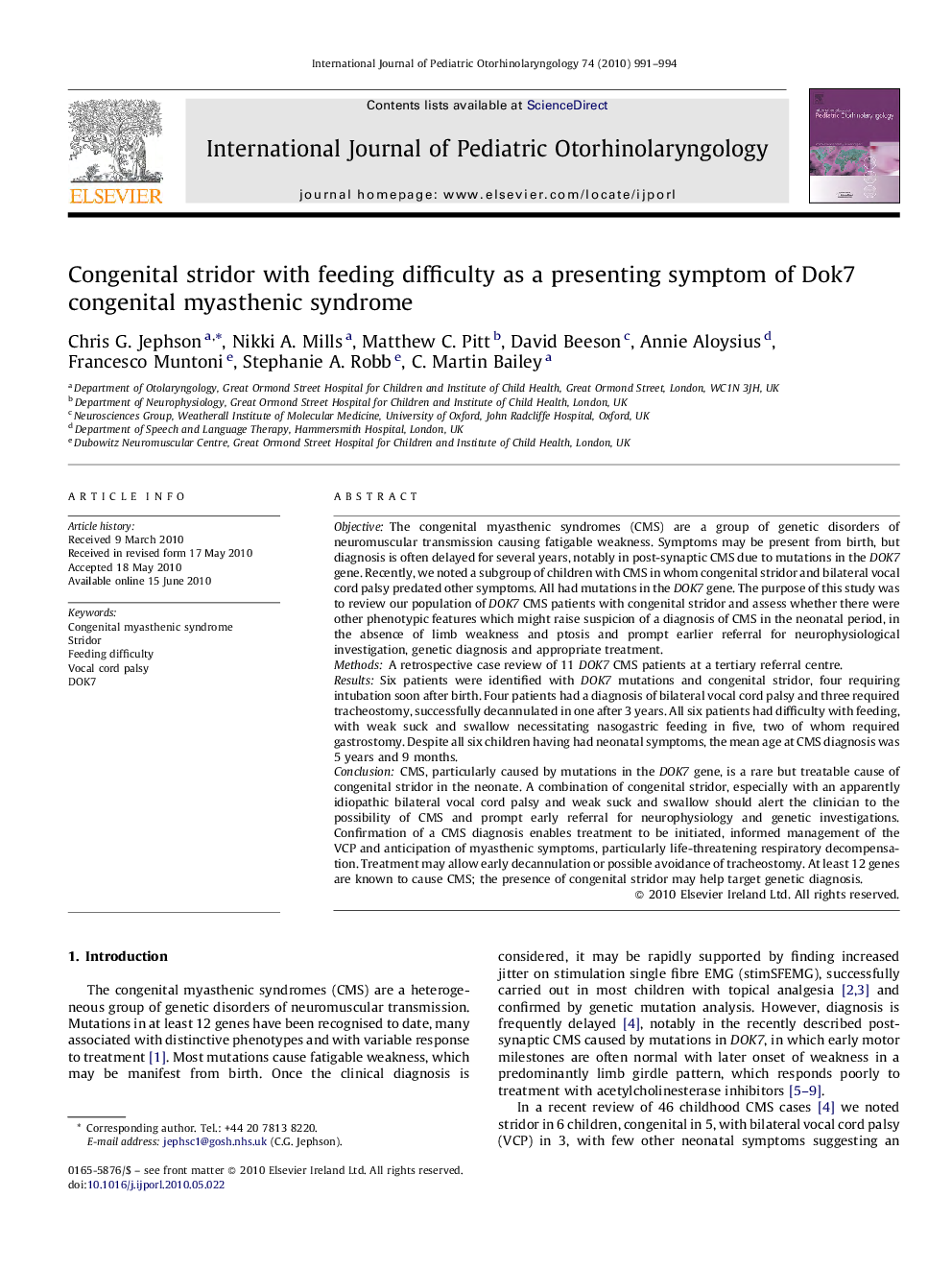| کد مقاله | کد نشریه | سال انتشار | مقاله انگلیسی | نسخه تمام متن |
|---|---|---|---|---|
| 4113924 | 1606054 | 2010 | 4 صفحه PDF | دانلود رایگان |

ObjectiveThe congenital myasthenic syndromes (CMS) are a group of genetic disorders of neuromuscular transmission causing fatigable weakness. Symptoms may be present from birth, but diagnosis is often delayed for several years, notably in post-synaptic CMS due to mutations in the DOK7 gene. Recently, we noted a subgroup of children with CMS in whom congenital stridor and bilateral vocal cord palsy predated other symptoms. All had mutations in the DOK7 gene. The purpose of this study was to review our population of DOK7 CMS patients with congenital stridor and assess whether there were other phenotypic features which might raise suspicion of a diagnosis of CMS in the neonatal period, in the absence of limb weakness and ptosis and prompt earlier referral for neurophysiological investigation, genetic diagnosis and appropriate treatment.MethodsA retrospective case review of 11 DOK7 CMS patients at a tertiary referral centre.ResultsSix patients were identified with DOK7 mutations and congenital stridor, four requiring intubation soon after birth. Four patients had a diagnosis of bilateral vocal cord palsy and three required tracheostomy, successfully decannulated in one after 3 years. All six patients had difficulty with feeding, with weak suck and swallow necessitating nasogastric feeding in five, two of whom required gastrostomy. Despite all six children having had neonatal symptoms, the mean age at CMS diagnosis was 5 years and 9 months.ConclusionCMS, particularly caused by mutations in the DOK7 gene, is a rare but treatable cause of congenital stridor in the neonate. A combination of congenital stridor, especially with an apparently idiopathic bilateral vocal cord palsy and weak suck and swallow should alert the clinician to the possibility of CMS and prompt early referral for neurophysiology and genetic investigations. Confirmation of a CMS diagnosis enables treatment to be initiated, informed management of the VCP and anticipation of myasthenic symptoms, particularly life-threatening respiratory decompensation. Treatment may allow early decannulation or possible avoidance of tracheostomy. At least 12 genes are known to cause CMS; the presence of congenital stridor may help target genetic diagnosis.
Journal: International Journal of Pediatric Otorhinolaryngology - Volume 74, Issue 9, September 2010, Pages 991–994